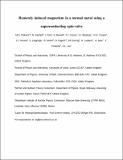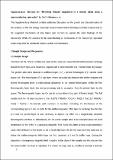Files in this item
Remotely induced magnetism in a normal metal using a superconducting spin-valve
Item metadata
| dc.contributor.author | Flokstra, Machiel Geert | |
| dc.contributor.author | Satchell, N. | |
| dc.contributor.author | Kim, J. | |
| dc.contributor.author | Burnell, G. | |
| dc.contributor.author | Curran, P. J. | |
| dc.contributor.author | Bending, S. J. | |
| dc.contributor.author | Cooper, J. F. K. | |
| dc.contributor.author | Kinane, C. J. | |
| dc.contributor.author | Langridge, S. | |
| dc.contributor.author | Isidori, A. | |
| dc.contributor.author | Pugach, N. | |
| dc.contributor.author | Eschrig, M. | |
| dc.contributor.author | Luetkens, H. | |
| dc.contributor.author | Suter, A. | |
| dc.contributor.author | Prokscha, T. | |
| dc.contributor.author | Lee, Stephen Leslie | |
| dc.date.accessioned | 2016-04-04T23:01:59Z | |
| dc.date.available | 2016-04-04T23:01:59Z | |
| dc.date.issued | 2016-01 | |
| dc.identifier | 209176173 | |
| dc.identifier | b9d3f6b1-8c95-429b-b336-f36f7cc92a29 | |
| dc.identifier | 84954075478 | |
| dc.identifier | 000367835400020 | |
| dc.identifier.citation | Flokstra , M G , Satchell , N , Kim , J , Burnell , G , Curran , P J , Bending , S J , Cooper , J F K , Kinane , C J , Langridge , S , Isidori , A , Pugach , N , Eschrig , M , Luetkens , H , Suter , A , Prokscha , T & Lee , S L 2016 , ' Remotely induced magnetism in a normal metal using a superconducting spin-valve ' , Nature Physics , vol. 12 , no. 1 , pp. 57–61 . https://doi.org/10.1038/nphys3486 | en |
| dc.identifier.issn | 1745-2473 | |
| dc.identifier.other | ArXiv: http://arxiv.org/abs/1505.03565v1 | |
| dc.identifier.other | ORCID: /0000-0002-2020-3310/work/54995358 | |
| dc.identifier.other | ORCID: /0000-0002-4333-1358/work/59953699 | |
| dc.identifier.uri | https://hdl.handle.net/10023/8552 | |
| dc.description | The authors acknowledge the support of the EPSRC through Grants No. EP/J01060X, No. EP/J010626/1, No. EP/J010650/1, No. EP/J010634/1, and No. EP/J010618/1, support of a studentship supported by JEOL Europe and the ISIS Neutron and Muon Source, and the support of the RFBR via awards No. 13-02-01452-a, and No. 14-02-90018 Bel-a. | en |
| dc.description.abstract | Superconducting spintronics has emerged in the past decade as a promising new field that seeks to open a new dimension for nanoelectronics by utilizing the internal spin structure of the superconducting Cooper pair as a new degree of freedom1,2. Its basic building blocks are spin-triplet Cooper pairs with equally aligned spins, which are promoted by proximity of a conventional superconductor to a ferromagnetic material with inhomogeneous macroscopic magnetization3. Using low-energy muon spin-rotation experiments we find an unanticipated effect, in contradiction with the existing theoretical models of superconductivity and ferromagnetism: the appearance of a magnetization in a thin layer of a non-magnetic metal (gold), separated from a ferromagnetic double layer by a 50-nm-thick superconducting layer of Nb. The effect can be controlled either by temperature or by using a magnetic field to control the state of the remote ferromagnetic elements, and may act as a basic building block for a new generation of quantum interference devices based on the spin of a Cooper pair. | |
| dc.format.extent | 6 | |
| dc.format.extent | 568303 | |
| dc.format.extent | 672997 | |
| dc.language.iso | eng | |
| dc.relation.ispartof | Nature Physics | en |
| dc.subject | QC Physics | en |
| dc.subject | NDAS | en |
| dc.subject | BDC | en |
| dc.subject | R2C | en |
| dc.subject.lcc | QC | en |
| dc.title | Remotely induced magnetism in a normal metal using a superconducting spin-valve | en |
| dc.type | Journal article | en |
| dc.contributor.sponsor | EPSRC | en |
| dc.contributor.institution | University of St Andrews. School of Physics and Astronomy | en |
| dc.contributor.institution | University of St Andrews. Condensed Matter Physics | en |
| dc.identifier.doi | 10.1038/nphys3486 | |
| dc.description.status | Peer reviewed | en |
| dc.date.embargoedUntil | 2016-04-05 | |
| dc.identifier.url | https://www.nature.com/articles/nphys3486#Sec5 | en |
| dc.identifier.grantnumber | EP/J01060X/1 | en |
This item appears in the following Collection(s)
Items in the St Andrews Research Repository are protected by copyright, with all rights reserved, unless otherwise indicated.


